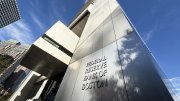Despite a second consecutive year of reduced revenues—as the pandemic closed many executive-education programs, for example, and reduced degree-student enrollment (and associated tuition, room, and board income)—and increased expenses for coronavirus precautions, Harvard may, surprisingly, avoid an operating loss for the fiscal year ended this June 30. Thomas J. Hollister, vice president for finance and chief financial officer, disclosed the newly promising outlook on April 27, citing expenses that were “lower than a year ago and lower than forecast.” Atop obvious savings—less travel, lower operating costs for relatively unpeopled buildings—the big items were salary and hiring freezes (compensation accounts for about half of Harvard’s operating costs) and the savings effected through the voluntary early-retirement incentives accepted by nearly 700 staff members during the prior year. For further details, see harvardmag.com/fy21budget-outlook-21.
University and school results will not be available until the annual financial report is published in early fall, but it seems likely that three Harvard units have been particularly affected by the pandemic. The Business School’s executive-education programs (nearly half of what had been a $500-million University operation pre-virus) were obviously constrained: although it has increasingly powerful online capabilities, the school has four campus buildings dedicated to in-person executive education, which was brought to a standstill for the duration. The Faculty of Arts and Sciences lost significant tuition, room, and board income, even as it has shouldered increased expenses for undergraduate financial aid and graduate-student support, plus testing and tracing costs for a large staff and any students in residence. Although FAS may have bettered its dire forecasts of last winter, when it projected a possible nine-figure operating loss (see “The Financial Fallout…So Far,” January-February, page 16), its unrestricted cash reserves likely are under severe pressure: a discouraging prospect, after the sustained work to replenish such reserves during the decade since the Great Recession. Finally, the campus-services group absorbed the loss of revenue from graduate-student housing, other Harvard real estate, parking facilities, and health services.
Despite such pressures, executive vice president Katie Lapp reported in mid May that the University and schools paid about $40 million in compensation and benefits to idled employees through April 30, and about $15 million to support idled contract workers through the same date: in total, equivalent to about 1 percent of total revenue in the fiscal year ended June 30, 2020.
But deans can take some cheer from Hollister’s report: the Corporation will increase distributions from the endowment by 2.5 percent per unit owned for the fiscal year beginning July 1—up from an expected 1 percent. That matters: the endowment is the largest single source of operating revenue. The distribution, usually the most dependable part of any school’s budget, has been very volatile. At the outset of the pandemic, when financial markets were in disarray, deans were told to adjust to an unbudgeted decrease for fiscal year 2021, rather than an expected increase (see harvardmag.com/covid-onlineschools-distributiondown-20); that guidance was subsequently modified, to allow for level-funding instead—augmented by a $20-million distribution of unrestricted funds from the office of the president (in effect, an informal additional percent increase in the distribution) to help deans defray COVID-19 costs. Deans were further supported by a 3 percent assessment on restricted funds to pay for pandemic costs. (See harvardmag.com/covid-fall-costs-20.)
Both the one-time presidential largess and the assessment disappear in the new fiscal year, effectively constraining the funds available to deans. The new guidance, for a 2.5 percent increase in distributions generally, helps make the deans whole as they budget for 2021-2022: a welcome bit of relief.
The Corporation’s decision suggests that endowment investments performed relatively well. That would track with the strong recovery in the public securities markets since the initial economic shock of the pandemic elicited unprecedented monetary and fiscal relief from the Federal Reserve Board and the U.S. government. In turn, it appears that philanthropic support for the University held up better than pessimistic forecasts; if current-use giving is strong through the reunion season, that will contribute to the better-than-expected financial outcome overall. Finally, although continued costs for COVID-19 testing and tracing are likely, and some expenses for safe building operation may be incurred, they are probably no greater, and may well be less, than the costs during the 2020-2021 academic year.
The elements would appear to be in place for the University’s financial recovery—if not uniformly for every school.








